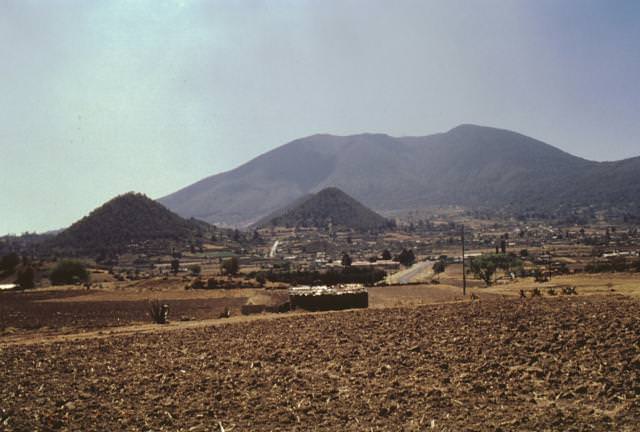[/caption]
Jocotitlan is an stratovolcano located about 60 kilometers northwest of Mexico City. It rises to an elevation of 3,900 meters above sea level, but it’s isolated from any other mountains or peaks in the surrounding plains, rising up 1,300 meters above the Toluca basin.
One of its most prominent features is a horseshoe-shaped escarpment visible from the northeast; it formed when the northeast edge of the caldera collapsed. Whenever this event happened, it created an enormous landslide that buried 80 square kilometers of land to the northeast of the volcano.
Jocotitlan formed in the Pleistocene era (11,000 to 1.8 million years ago) primarily out of andesitic-to-dacitic lava flows. After that there was an obsidian dacitic eruptino and then the creation of a lava dome complex. The volcano produced regular lava flows, pumice-fall eruptions and pyroclastic surges. The last known eruption at Jocotitlan happened about 700 years ago, and produced block-and-ash flows and pyroclastic surges.
We have written many article about volcanoes for Universe Today. Here’s an article about other volcanoes in Mexico, and here’s an article about many famous volcanoes.
Want more resources on the Earth? Here’s a link to NASA’s Human Spaceflight page, and here’s NASA’s Visible Earth.
We have also recorded an episode of Astronomy Cast about Earth, as part of our tour through the Solar System – Episode 51: Earth.

